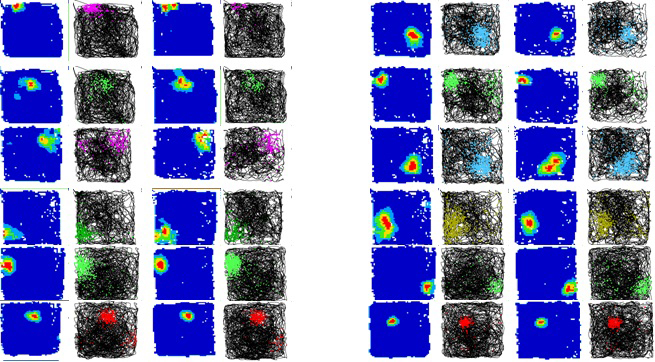The Derdikman spatial perception and memory lab combines cutting edge tools to record and stimulate from awake behaving mice and rats. Specifically, we perform long-term recordings of many nerve cells using calcium imaging with miniscopes, and in addition single nerve cell recordings using multi-channel neuroprobes. This is done in combination with neuronal stimulation using chemogenetics and optogenetics.
The major scientific problems the lab is busy with are as follows:
Connecting between real intelligence and artificial intelligence
How can we use principles from artificial neural networks to understand real neural networks? Recently, theories from machine learning have started to supply insights about how a system with neurons can obtain memories and learn new things. We are interested in understanding whether similar principles hold in the brain.
Deciphering the brain’s neural network of navigation
What is the neural network responsible for our ability to navigate? Multiple cell types in the hippocampus and nearby brain structures are known to be related to navigation. Examples of such cells include place cells, grid cells and head-direction cells. While the properties of such cells are known for many years, it is not know how they work as a network, and what is the algorithm of the brain, allowing these cells to interact and allow the animal to navigate. To investigate this, we are now able to record hundreds of nerve cells simultaneously in awake and behaving mice, using cutting-edge techniques.

Figure: Example of recordings of place cells in the hippocampus. The rat runs for 20 min. in a 1×1 meter box while we record activity of place cells from its hippocampus. Each 4 images in a line demonstrate the response of a single place cell while an animal is running in a box. 1 – the response of the cell the first time in the box (from blue to red), 2 – the track of the rat in black and the places the cell fired action potentials (in different colors), 3 – the response of the cell the second time in the box (note the memory), 4 – the track of the rat and the activity of the cell on the second run.
Learning and memory in the brain’s cognitive map
Place cells, and other cells in the hippocampus and adjacent structures are known to encode the environment in which the animal is living in and the position of the animal in this environment. It is known now for several years that these cells are dynamic in nature, and undergo processes of change, termed as remapping, showing that they are dynamic, and affected by processes such as changes in environmental context or drift as a result of new information arriving from the world or forgetting. All of these processes turn the representation of these cells into a dynamic constantly changing process. Recently, we have found evidence that the changes in the hippocampus, as manifested by place cells and their remapping, are related to the experience of the animal, and not directly to time passed (Khatib et al., bioRxiv, 2022). We are now investigating how such drift could be modulated by various factors, such as dopamine.
Coordinate transformations in the brain
The cognitive map in the brain requires a coordinate trasformation. While are senses obtain information relative to our body direction (“egocentric coordinates”) when we want to navigate we need to move to world coordinates. We have shown (Gofman et al.) that the sensory pathway from the periphery to the hippocampus involves a coordinate transformation. Such a trnasformation is an important building block for understanding how the cognitive map in the hippocampus is constructed. We are currently continuing to understand this process, how the brain actually performs the transformation. Towards this end we perform recordings of hundreds of neurons simultaneously while the mouse is running in diverse and flexible environments.
The brain’s social map
Recently, we have become interested in the question of how the hippocampus is involved in social coding. Specifically, we are interested in the role of hippocampus in territoriality. For more information, see our recently published review: Wirth et al.
The hippocampus in health and in disease
We are interested what are the networks within the hippocampus which are altered and changed in brain diseases such as Alzheimer’s disease. We recently published a paper demonstrating how memory functions and place cells in the dentate gyrus (part of the hippocampus) are affected in a model of dementia (Rechnitz et al.)